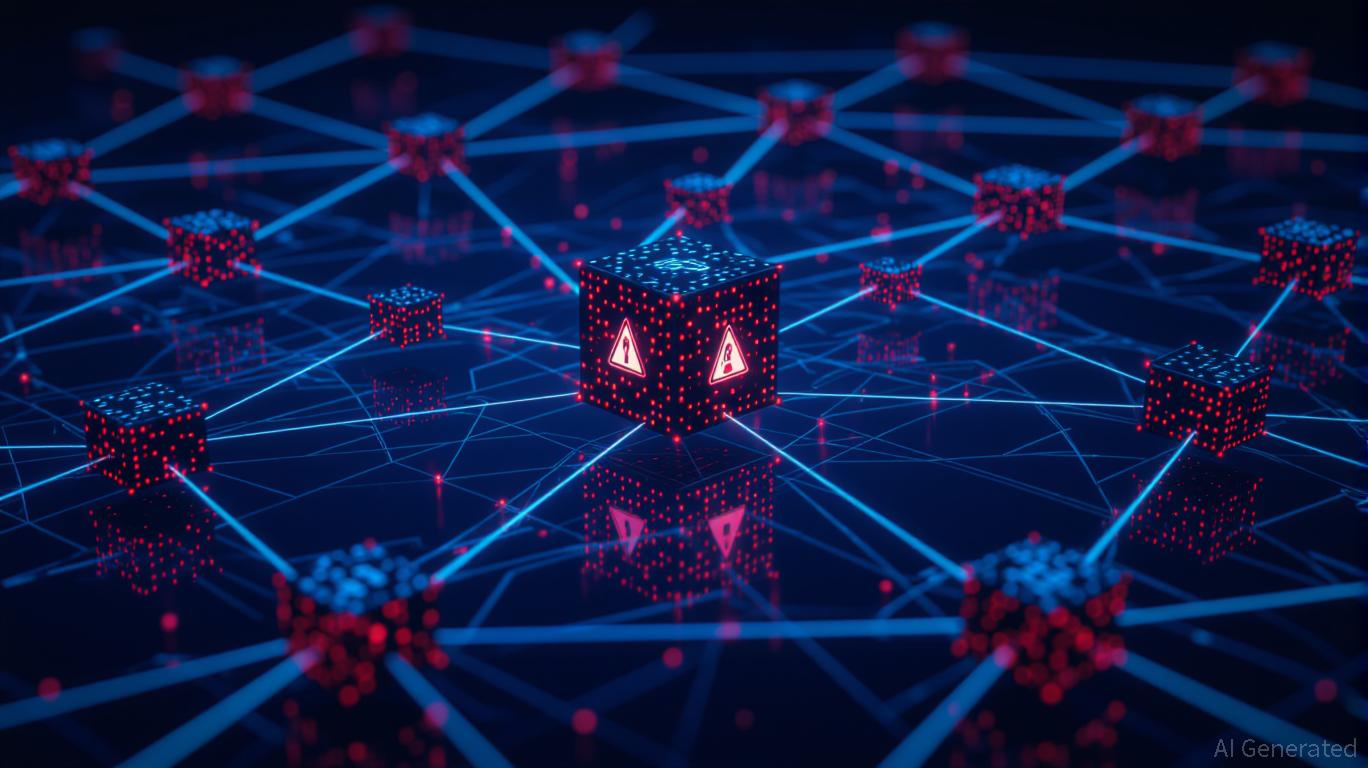The ChainOpera AI Token Crash: An Urgent Warning for Cryptocurrency Projects Powered by AI
- ChainOpera AI's COAI token collapsed 96% in late 2025, exposing systemic risks in AI-driven DeFi ecosystems. - Centralized governance (10 wallets controlled 87.9% supply) and misaligned incentives exacerbated panic selling during crises. - Technical flaws included untested AI models with 270% increased vulnerabilities and inadequate smart contract security audits. - Regulatory shifts like the GENIUS Act compounded liquidity challenges, highlighting the need for compliance-ready AI crypto projects. - Inve
Governance Failures: Centralization and Incentive Misalignment
Centralization within the governance system was a core issue behind COAI’s downfall. BeInCrypto’s investigation revealed that
The governance approach also failed to effectively prevent conflicts of interest. For example, while staking tokens was meant to democratize voting, the reality was that a handful of wallets could still dictate outcomes. This misalignment of incentives became even more problematic when algorithmic stablecoins like

Technical Vulnerabilities: AI Models and Smart Contract Risks
Technical weaknesses further undermined ChainOpera AI’s already fragile governance. Despite assurances of secure smart contracts, the platform was plagued by subpar application security and insufficient infrastructure protections, as detailed in a Kryll blog post
During this time, autonomous AI systems also saw a 67% rise in misconfigurations and logical mistakes,
Regulatory Pressures: Compliance Costs and Uncertainty
Regulatory changes added further complications for ChainOpera AI.
Lessons for Investors: Prioritizing Resilience Over Innovation
The COAI incident imparts three major takeaways for those investing in AI-powered crypto ventures:
1. Insist on Decentralized Governance: Projects where a small number of wallets control most tokens are inherently risky. Investors should look for protocols with wide, fair token distribution and clear, open DAO structures.
2. Examine Technical Audits Closely: Both AI models and smart contracts require thorough, independent security reviews. COAI’s lack of such protections left it open to systemic breakdowns.
3. Evaluate Regulatory Preparedness: Regulatory changes can quickly destabilize projects. Investors should assess how well a project adapts to shifting compliance demands and test its ability to withstand regulatory shocks.
Conclusion
The downfall of the ChainOpera AI token stands as a warning for the DeFi community. While AI has the potential to revolutionize blockchain, its adoption must be paired with strong governance, transparent technical standards, and proactive regulatory planning. For investors, the focus should move from pursuing novelty to ensuring that projects are built to endure systemic disruptions. As the crypto landscape evolves, those who learn from these lessons will be better equipped to manage the risks associated with AI-driven finance.
Disclaimer: The content of this article solely reflects the author's opinion and does not represent the platform in any capacity. This article is not intended to serve as a reference for making investment decisions.
You may also like
Hedera Hashgraph (HBAR) Rallies Towards $0.19 as Institutional Interest Grows

LQTY Holds Near $0.4865 as Price Compresses Between Support and Resistance in a Tight Trading Range

Dogecoin Analysts Track 3 Cycle Setup With Strong Rally Signs

Popular Analyst Predicts $TEL Could Hit 12X to $0.04193 as Higher Lows Hold
